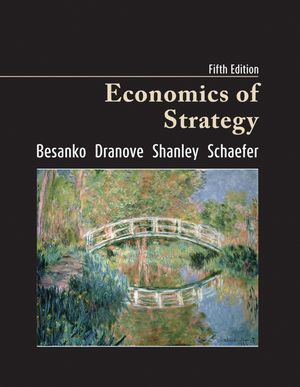
THE ECONOMIC ENVIRONMENT OF BUSINESS
 |
| Summer 2012 |
 |
Graduate (S) Business Administration 509 THE ECONOMIC ENVIRONMENT OF BUSINESS |
|
|
|
| | HOME | SYLLABUS | CALENDAR | ASSIGNMENTS | ABOUT PROF. GIN | |
|
B. Competitors and Competition 1. Pricing and output decisions for the firm a. Revenue (1) Total revenue . . (2) Marginal revenue . . (3) Demand and marginal revenue . . . . . . . . . b. Profit maximization
. . . . . . . . . . 2. Identifying competitors a. SSNIP criterion
Ex. - . b. Substitutes
(1) Products have similar product performance characteristics
Ex. - . (2) Products have similar occasions for use
Ex. - . (3) Products sold in the same geographic market
(a) they are sold in the same location (b) it is inexpensive to transport goods (c) it is easy for customers to travel to buy goods Ex. - . c. Measurement
. . . . d. Geographic competitor identification
. 3. Measuring market structure
a. N-firm concentration ratio
Ex. - . . . . . .
. b. Herfindahl Index
. . . . . .
. 4. Market structure and competition a. Classifying market structure . . . (1) Concentration ratio CR4 < 40 => effectively competitive 40 < CR4 < 60 => monopolistic competition CR4 > 60 => oligopoly CR1 > 90 => effective monopoly . (2) Herfindahl Index Perfect competition - usually below 0.2 (or 2000) Monopolistic competition - usually below 0.2 (or 2000) Oligopoly - 0.2 - 0.6 (or 2000 - 6000) Monopoly - 0.6 and above (or 6000 and above) . . . . . . . . .
. b. Perfect competition (1) Characteristics (a) Many sellers
. (b) Homogeneous product - each product exactly the same
. (c) Full information on prices and products are available to consumers . (d) Free entry and exit . (e) Firms are price takers - accept the price established in the market . Ex. - Agricultural, commodities, financial markets . (2) Profit maximization . . . . . . . . . . (3) Long-run equilibrium . . . . . . . . . . (4) Factors leading to decrease in prices
(a) Many sellers
i) Diversity of pricing preferences ii) Coordinated reduction in production needed iii) Temptation to cheat and lower prices . (b) Consumers perceive product as homogeneous
. (c) There is excess capacity
. . . . . . . . . (5) Social efficiency of perfect competition
. c. Monopoly
. . . . . . . . . . . d. Monopolistic competition (1) Characteristics (a) Many sellers
. (b) Products are differentiated
i) Vertical differentiation
Ex. - . ii) Horizontal differentiation
Ex. - .
. (2) Entry
. . . . . . . . e. Oligopoly (1) Characteristics (a) Few firms (b) Homogeneous or differentiated product (c) Actions by one firm will affect others in industry . (2) Modeling behavior
- Simultaneous-move game - choices are made at the same time
Ex. - . . . . . . (b) Outcomes i) Nash equilibrium
Ex. - . . . . . ii) Dominant strategy
Ex. - . . . . . iii) Prisoners' Dilemma
. . . . .
. . . . . (c) Game trees
. . . . . . . . . . .
. 5. Reasons for market structure a. Economies of scale and minimum efficient scale . . . . . . b. Entry barriers . c. Product differentiation .
. |